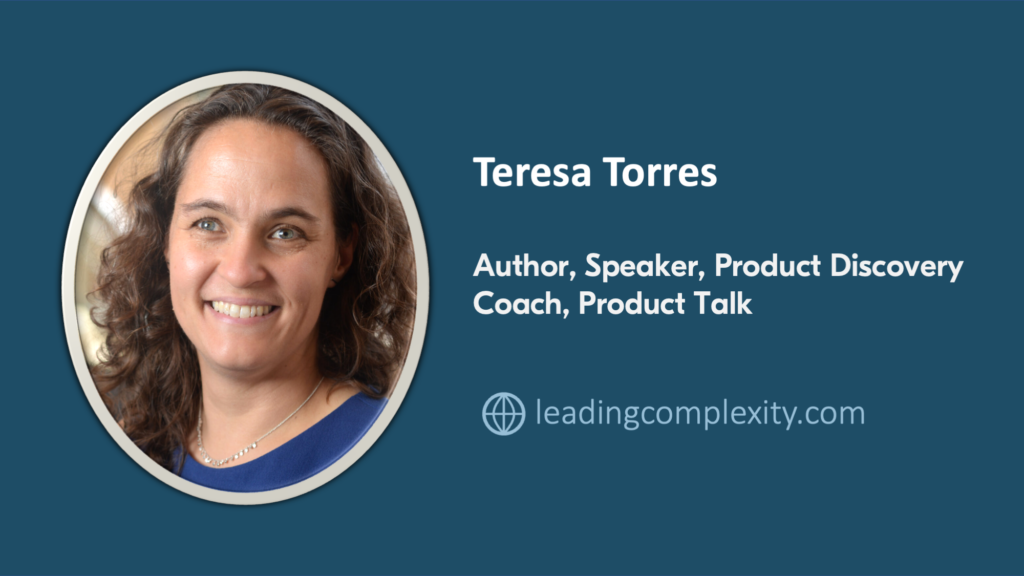
We are fortunate to be able to present Teresa Torres as one of the speakers in this years program.
Here is a short video of her talking about complexity and her upcoming session.
Hi everyone, I am Teresa Torres. I work as a product Discovery coach. That means that I help digital product teams make better decisions about what to build. I do that by teaching them how to interview customers in a way that finds unmet customer needs, pain points, and desires, and by iteratively testing their solutions through experimentation and assumption testing. It’s a mindset that’s really critical when we’re dealing with complexity.
So let’s talk about what do I think about complexity. Unfortunately it’s something we are facing everyday in our businesses and in the environment of the world today. It’s easy to think that when we face a customer problem or a business problem or an existential threat like covid or maybe even artificial intelligence, that we want to oversimplify. We want to come up with a fast answer. We’re often forced to do so by our organizational context, but we’ve learned over and over again that in complex situations, our first, our fastest answer is rarely the best one. With complex situations, what we find is that it’s rarely a right or wrong answer; there’s only better or worse answers. We find that our solutions have unintended consequences that are hard to predict up front. Essentially it is messy. We find that we’re engulfed in a lot of messiness.
So for leaders that are facing complexity, the first thing that I would recommend is simple but it’s certainly not easy and that’s to slow down. What we know from problem solving research is that when we’re facing complexity, the best way to get better outcomes is to take the time to frame the problem or to frame the situation from multiple perspectives. So we want to look at multiple ways that we can frame the problem or frame the situation we are facing. You can do this with other people on your team. So you can take time to individually frame the problem and then look at how do other people do it. What this does is that it allows us to explore potential solutions, based on the different framings. So each framing opens up more of the solution space and it allows us to try on one solution at a time, one framing at a time and say; what impact does this have on the solution space.
This is really powerful, it unlocks this compare and contrast mindset. We know from decision making research that when we compare and contrast our options, we make better decisions. So even though it’s hard, it’s rarely easy to slow down, if you’re facing complexity one of the best things you can do is to slow down, consider multiple options, and take the time to compare and contrast them against each other.
In my talk later we’ll be exploring exactly how you can do this. We’re gonna dive deep on how do we frame opportunities, how do we frame the situations that we’re facing and then how do we use those different framings to generate multiple solutions. And then how do we set up really good compare and contrast decisions with those solutions. And we’ll use experimentation and assumption testing to really evaluate what’s our best path forward. I hope you can join us. I look forward to it!
Learn more about the program and Teresa’s session by visiting http://www.leadingcomplexity.com



